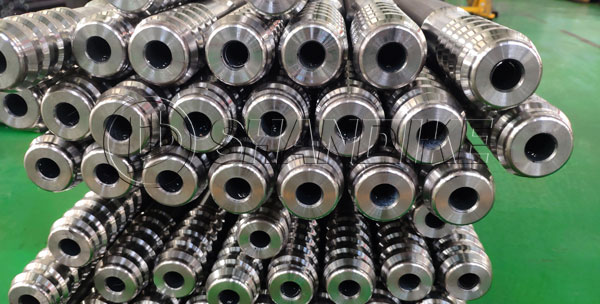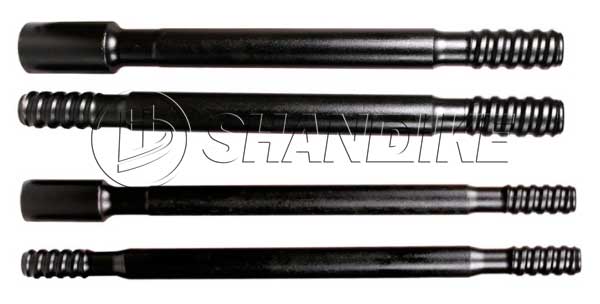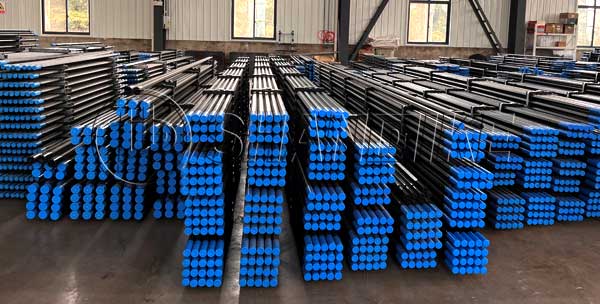How to prevent premature failure of threaded drill rods
2024.09.27Shandike eason
Preventing the failure of threaded drill pipe is a comprehensive process involving multiple aspects, which can be mainly started from the following aspects:
- Select and use qualified threaded drill pipe and accessories
Ensure the quality of drill pipe and accessories: Select threaded drill pipe of qualified quality, including its joints, threads and other parts, and ensure that its material strength, geometric dimensions, etc. meet the standards.
Use qualified thread grease: Thread grease should have good lubricity, sealing and corrosion resistance, and can protect the thread surface and reduce wear and corrosion. - Control the use parameters of drilling tools
Control drilling pressure and speed: Avoid excessive drilling pressure and high speed to reduce the axial and radial impact loads on the drill pipe and prevent it from exceeding the safe load.
Reasonably control the performance of drilling fluid: Ensure that the sand content, pH value and other performance indicators of the drilling fluid meet the requirements to avoid corrosion and wear of the drilling fluid on the drill pipe.


- Optimize the quality of drilling tool combination and wellbore
Reasonably combine drilling tools: The stiffness difference of adjacent drilling tools should not be too large. Generally, the stiffness of adjacent drilling tools should not be greater than 3.5~5.5 to reduce the bending and bending stress of the drilling tools.
Control the quality of the wellbore: Reasonably control the quality of the wellbore and reduce the dogleg degree to reduce the wear and fatigue of the drill pipe under the action of lateral force. - Improve the stress distribution of threaded drill pipe
Use improved threads: Use digital threads with larger root fillet radius and high fatigue life joint threads (such as LET buckles) to reduce stress concentration at the threads.
Add shock absorbers and suspenders: Add shock absorbers and suspenders during drilling to control the vibration of the drill string and reduce the dynamic load on the drill pipe. - Strengthen the maintenance and inspection of drill pipes
Regularly check the thread status: Regularly check whether there is damage, wear or cracks on the thread surface, and promptly discover and deal with potential problems.
Reasonable use and maintenance of drill pipes: Standardize the use of drill pipes, avoid overload operation, and strengthen the cleaning and maintenance of drill pipes to extend their service life. - Preventive measures for special working conditions
Handle complex formations: When drilling in complex formations, the drilling parameters should be appropriately adjusted, such as reducing the rotation speed, increasing the mud displacement, etc., to reduce the impact load on the drill pipe.
Use special drill pipes: When drilling in formations containing corrosive gases such as H2S, special drill pipes such as anti-sulfur drill pipes should be used, and corresponding H2S suppression measures should be taken.
In summary, preventing threaded drill pipe failure requires multiple aspects, including selecting and using qualified drill pipes and accessories, controlling the use parameters of drilling tools, optimizing drilling tool combinations and wellbore quality, improving the stress distribution of drill pipes, strengthening the maintenance and inspection of drill pipes, and preventive measures for special working conditions. Through the comprehensive application of these measures, the failure probability of threaded drill pipes can be effectively reduced, and the safety and efficiency of drilling operations can be improved.


